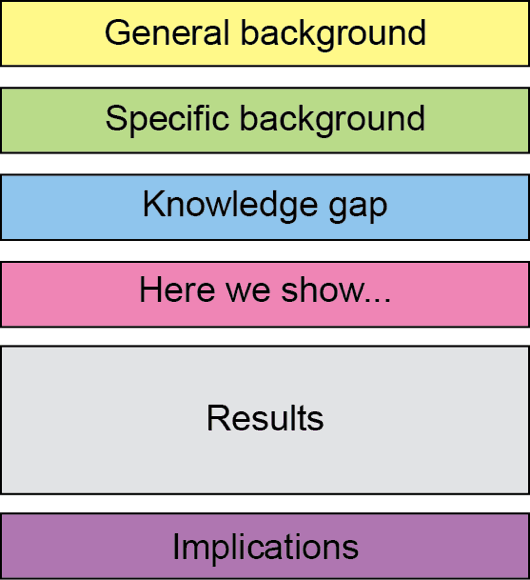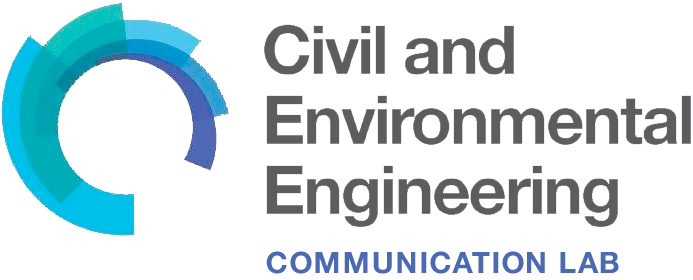Most recent revision of this article was led by Communication Fellow Craig McLean.
Criteria for Success
- Provides some general background, something that everyone in your audience cares about.
- Narrows focus on the specific background to bridge between the general concept and what you did.
- Identifies the Knowledge Gap. What specific problem or phenomenon do we not understand in this field of study. What is the actual research question you are addressing?
- Here we show. Provides one sentence about what you did, and how that work addresses the demonstrated gap.
- Approach & Results. How did you address your knowledge gap, broadly? What did you find? (Be quantitative!)
- Implications. What do your results mean in regards to the field? Why should your audience care? What comes next?
Structure Diagram
In some cases, the different sections can be intertwined, but most of the times, this structure will be the easiest for your reader to parse:

Purpose
Your abstract is your sales pitch for your work. When browsing a journal, very few readers get beyond the title and abstract for an article. If you haven’t convinced your reader by the end of the abstract that your work is interesting and relevant, you’ve lost the opportunity to convert them from a curious browser to a dedicated reader. The same goes for folks deciding which talks and posters to see at a busy conference.
In only a few hundred words—or, from your audience’s perspective, a few minutes of reading time—you must
- convince your reader that your work is addressing an authentic, pressing problem in science or engineering,
- describe the essence of your results,
- explain the contribution of the results towards the field and future work.
Analyze Your Audience
Most people will take only minutes to skim your abstract in order to decide whether they actually want to learn more about your work. Use this time wisely.
Start from a place that your entire audience can understand. For a specialized audience, you could lead with “Heterotrophic bacteria in the hypolimnia of dimictic lakes in Martin County modulate allochthonous carbon deposition.” For journals with a broader readership, you would need to start with something everyone cares about, say, “Microbes in lakes are critical to controlling greenhouse gas emission and water quality.”
Skills
Avoid jargon
Don’t rely on technical names; explain what something is or why it matters for your work. If by “PM2.5” you really mean “2.5-micron particulate matter”, just say “2.5-micron particulate matter”. Rather than “16S rRNA”, you might say “a bacterial taxonomic marker gene (16S rRNA)”. In this way, you speak to the general audience (who can understand “bacterial taxonomic marker gene”) and to your specialist peers (who would ask, “Which taxonomic marker gene?”).
Be critical of any jargon you include, and remove any that is not essential to conveying your high-level message. Consider asking a friend in a different lab to read over the abstract and point out any terms that obscure your meaning.
Use the standard abstract formula
Every successful abstract has six components. Use the Criteria for Success above! Every component should only have a few sentences.
Additional reading
Check out the full collection of free CommKit Resources created by the MIT CEE Comm Lab team.
